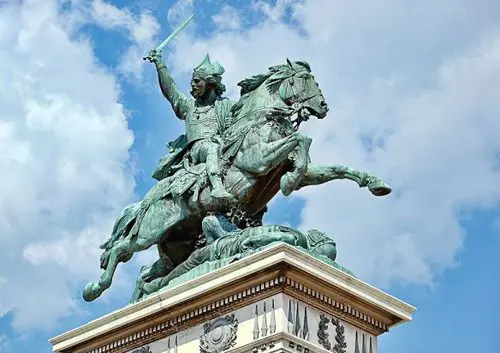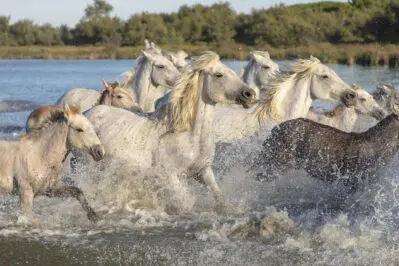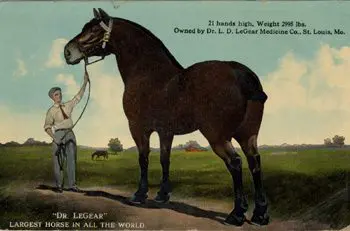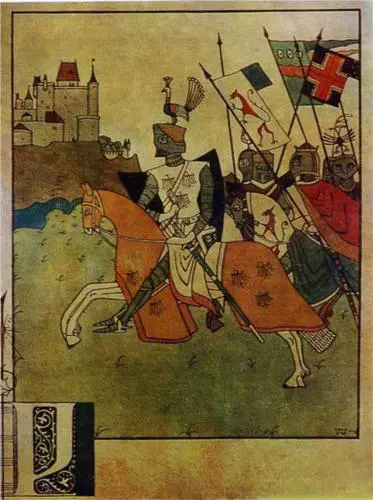Of Battles, Horses and Heroes
As the superb cave paintings at Lascaux and elsewhere attest, horses have existed in Western Europe for over 30 millennia and must have provided an important source of food for local hunters. We do not know just when people began to domesticate them, but it may well have been long before they were used as mounts or draft animals. Just like cattle, sheep and goats they are an excellent source of milk and meat.

The first reliable written records show that by the time Julius Caesar conquered Gaul, the Celtic cavalry was one of the best in the world and, as hired mercenaries, formed a vital part of the Roman war machine. The revered Celtic goddess of the horse, Epona, held an important place in Roman mythology as well. During Caesar’s Gallic Wars his greatest reversal came at the hands of Vercingetorix and the Gallic cavalry at the battle of Gergovia in 52 BC where the Roman army suffered a stinging defeat thanks in large part to the horsemanship of the Gauls. They could not long defy the might of the Roman Empire, but it demonstrated dramatically the effectiveness of their cavalry.
As Europe was beginning to emerge from the Dark Ages and we regain access to some written records, the Moors were launching an attack from Spain deep into southern France. Large sections of the former Roman Empire were conquered by their new-found religious fervor. Many historians believe that the battle of Poitiers about 729 was one of the great turning points of history. There the French King, Charles Martel, decisively defeated the Moorish army and brought a halt to the spread of Islam in Western Europe. Had it not been for that victory and aggressive French attacks which followed, Chartres might be a mosque instead of a cathedral and all Europe might have fallen to Islam. Eventually the French forces drove the invaders back across the Pyrenees and cavalry played a vital role in the military campaigns.
It was about the time of Poitiers that the stirrup came into popular use in Western Europe though they had been used in China for centuries. Of course this was a technological advance of huge proportions since equestrian arts were so vital to military success. How great an impact they may have had on warfare and on feudal society is one of history’s great controversies. The Moors brought lighter Arabian and Barb horses from North Africa which may have been a factor in their defeat as the Franks seem to have had heavier horses and the stirrup probably gave them more ability to use them in heavy armor against the lighter armed Moslem cavalry on smaller horses.
Warfare continued back and forth across the Pyrenees and in 1771 Charlemagne made an ill-fated invasion of Spain. Roland was protecting the rear of the French army some distance behind as it was retreating across the Pyrenees through the pass at Roncevaux, but his detachment was attacked and exterminated by pursuing Moors. Roland famously refused to blow his horn for help until his dying moments. The story gave rise to one of the most popular and wide spread romantic poems of the middle ages, The Song of Roland. This Saga remained tremendously popular in Western culture for centuries and countless translations, songs and adaptations across Europe were woven around this romantic episode.
For centuries after that, French horsemen mounted on huge, powerful horses, were successful in many battles, including the one at Hastings, which certainly did change the history of Europe. Another military development, the English long bow, caused a shift in military tactics at the Battle of Agincourt in 1415 when the English archers wiped out a large part of French aristocracy charging them on horseback at long range with their arrows before they could ever engage hand to hand.

Several horse breeds developed in France and one of the most famous is the Camargue horse which long survived in the wild in the marshy areas around the Delta of the Rhone River. These magnificent white horses are still used by the gardiens, or French cowboys, who take care of the horse herds and the local cattle.

The Percheron Dr. LeGear holds the equine weight record for modern times at about 3,000 lbs. and 21 hands tall.
An even more famous French breed is the Percheron which is used in many parts of the world today both as a work horse and as a saddle animal. They are the world’s biggest horse and Dr. LeGear holds the equine weight record for modern times at about 3,000 lbs. and 21 hands tall. Napoleon favored these horses for his cavalry and to pull his artillery. Tragically many of them were killed as Europe was ravaged by his bloody wars. Some believe that the knights of old, who had to be winched up into the saddle on a sling with their heavy armor, used horses even larger than Dr. LeGear.
Horses from all over the world like Arabs, Thoroughbreds and Quarter Horses are now popular in France, but another breed which is very French is the Selle Francais which has excelled internationally in jumping and eventing competitions.
After the Second World War the French, motivated by a strong cultural connection to the horse, were the first to revive the idea of travel on horseback and have maintained many rights-of-way for equestrian travel. This combined with the beautiful countryside, delicious food, and storied history create the ideal setting for riding trips today. It should be no surprise that some of Equitours’ best and most diverse horseback riding vacations are in France. Whether riding On the Kings Trail in Perigord or exploring the Vineyards and Beaches of Bordeaux the strong equestrian history of the country is never far from view and provides a fascinating backdrop for the rides.
Article by Bayard Fox



